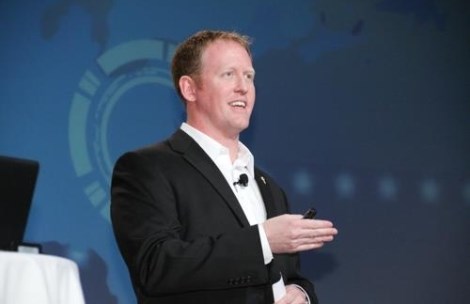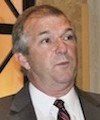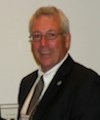Navy Seal Robert O'Neill Headlines NASF Mid-West Seminar in Michigan June 26-28
Team Leader on the Naval Special Warfare Development Group will be the featured speaker at Boyne Highlands Resort in Harbor Springs, Michigan, an event sponsored by the NASF Michigan Chapter.
#nasf

Robert O'Neill, a Team Leader on the Naval Special Warfare Development Group, will be the featured speaker at the NASF Mid-West Seminar June 26-28 at Boyne Highlands Resort in Harbor Springs, Michigan, an event sponsored by the NASF Michigan Chapter.
Featured Content
O'Neill, who will speak on Friday, June 27, is one of the most highly-decorated combat veterans of our time. He has deployed more than a dozen times, and he held combat leadership roles in more than 400 combat missions in four different theaters of war. A highly-trained Navy SEAL, he led the military's most elite and was involved in our nation's most important campaigns. With most of his career shrouded in a classified cloak, O'Neill was the man on the ground we have never heard of but know exists. He was one of the quiet professionals performing the most difficult tasks in the most difficult circumstances, serving his remarkable career in the shadows and keeping America safe in the process.
In his line of work, instant, critical decision-making is an absolute necessity for success, and he has proven experience in exceptionally high-risk and fluid environments. Having trained more than 800 special operations and tactical operators, O'Neill brings this unique expertise to organizations and translates his elite SEAL team training into high-impact, actionable insights on leadership, decision-making, operating in uncertain environments, and how to become the 'best of the best.' His mantra is "never quit," and O'Neill believes this is the single most important factor in determining success.
The featured speaker on Thursday, June 26 will be Dan Wyant, Michigan DEQ Administrator. Oher presentations will be given by Jeff Hannapel, VP of Regulatory Affairs, The Policy Group; Drew Johnson, Walgren Co.; Bill Krenz, Atotech; Bill Lievense, Capitol Group; Laurie Riegle; Fritz Lehmann, Coventya; Jolie Zak, Scientific Controls; Derek Smith, Techmetals; Dr. Brian Long, Grand Valley St. Univ.; Rick Delawder, NASF President and SWD, Inc; and Ken Hankinson, KCH Services.

|

|

|

|

|
| Bernie Haviland | Jeff Hannapel | Bill Krenz | Bill Lievense | Laurie Riegle |

|

|

|

|

|
| Jolie Zak | Dr. Long | Rick Delawder | Ken Hankinson | Rob O'Neill |
Please visit the PFOnline Calender for more information.
RELATED CONTENT
-
The Study of Copper Anodes in Acid and Cyanide Plating Baths
The 1956 Carl E. Huessner Gold Medal Award was given to Charles Faust and William H Safranek for Best Paper appearing in Plating or the AES Technical Proceedings in 1955, and their paper is republished here in a series on the AES/AESF/NASF Best Paper Awards. Their work involves an evaluation of anodes for copper plating at the time when OFHC anodes were first emerging in use.
-
Plastics and Plating on Plastics [1944]
This republished 1944 AES convention paper presents an historic perspective of the early days of plastics in surface finishing - using them and plating on them, in the waning years of World War II. The discussion reviews the uses of plastics in plating equipment and processing at that time, as well as the coating of the plastics themselves, with accompanying application photos. You will note that today’s conventional plating-on-plastics processes lay far in the future. Surprisingly, CVD processes are discussed.
-
AES Research Project #41: Part 4: Adhesion Failure of Electrodeposited Coatings on Anodized Aluminum Alloys
An SEM study of peel-test adhesion specimens from plated coatings on anodized aluminum shows that failure can be categorized in three different modes: (1) specimens exhibiting poor adhesion strength, which fail at the anodic film/coating interface; (2) specimens with good adhesion strength, which fail by local fracture of the anodic film and (3) specimens with excellent adhesion strength , which fail when the applied load is greater than the strength of the alloy substrate. The effect of anodizing parameters and alloy composition on peel test failure are discussed.


















